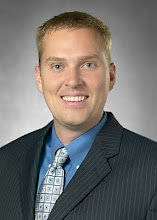History
There is some confusion over the authority of engineers and surveyors. Who can do what? From 1941 to 1982, licensed Civil Engineers were authorized to perform all of the duties reserved for licensed Land Surveyors, in addition to all of the design decisions traditionally attributed to engineering. The California Board of Professional Engineers and Land Surveyors (BPELS) decided in ’82 (a culmination of 15 years of lobbying from surveying interests) that important matters of real property, including surveying and interpretation of parcels, subdivisions of land, rights-of-way, and easements, were too specialized for Civil Engineers, who in most cases are not educated or experienced in such matters. BPELS did however, allow Civil Engineers to retain the authority to perform topographic surveys and construction staking, and Civil Engineers licensed prior to 1982 were ‘grandfathered’ and can still perform all of the duties of a Land Surveyor until their retirement.
Frequently Asked Questions / Frequent Comments
"I thought that Civil Engineers could do everything a Land Surveyor can do, and more."
That was the case prior to 1982 (and is still the case for all Civil Engineers licensed prior to that date). But since then, only surveyors can prepare subdivision maps and condominium plans, perform boundary surveys, draft legal descriptions, and the like.
“Can a Civil Engineer perform my topographic survey?”
Maybe. The laws do allow for this authority. However, if the topographic survey must include references or dimensions to property or easement lines, then only a Land Surveyor (or pre-’82 Civil) can prepare such a survey.
“Can a Civil Engineer perform construction staking for my project?”
Probably. But again, if there are critical dimensions to property lines or easements that are part of the construction staking/survey, then doing so may be overstepping the bounds of the engineering license.
“Should I hire a Land Surveyor or Civil Engineer to perform my construction staking?”
That depends. The Civil Engineer may say that they should handle the construction staking because they designed and laid out the grading or improvement plan, and therefore they know the project more intimately. The Land Surveyor may say that surveying is their customary profession, something they do all the time, and therefore it’s best to employ the best professional; or a boundary issue may come up as part of the survey, and they are the only ones able to handle the issues that arise out of such work. Both arguments have good merit and should be considered at the client’s discretion.
“My Civil Engineer performs boundary surveys for me all the time.”
If he/she does, then they were probably licensed prior to 1982 (license number is less than 33966), or they employ (or subcontract) a licensed Land Surveyor to perform these tasks on their projects. Otherwise, they could be violating the law to perform such work under their own license.
“So can my Land Surveyor prepare grading plans, improvement plans, retaining wall plans, water and sewer design, etc?”
No, an LS does not have the authority to design such features for construction. However, an LS may practice ‘land planning’, and if they are presenting these features in concept as part of a planning document, then they may have such authority.
“Who can prepare Tentative Maps?”
Good question. Tentative Maps often contain boundary information and proposed lines of subdivision, together with proposed roadways, storm drainage features, water and sewer facilities, etc. Some purists believe that such maps must be dually stamped (a Land Surveyor and a Civil Engineer), because they contain elements of both professions. Most agencies, however, interpret this as a planning document and therefore allow either a Surveyor or Engineer prepare Tentative Maps.
When in doubt, just think 'Boundary’
Ask yourself “does what I’m trying to do directly involve the boundary of ownership or other legal interest in real property?” If the answer is ‘yes’, then you probably need the services of a Professional Land Surveyor (or a Civil engineer licensed prior to 1982). Subdivision of land? PLS. Lot line adjustment? PLS. Legal description for a new easement? PLS. Survey my property boundary? PLS. You get the idea.
John S. Coffey, PE, PLS, is founder and President of Coffey Engineering, Inc. in San Diego. He’s contributed to over a thousand civil engineering, surveying, and planning projects in San Diego and surrounding communities over the past 15 years. 858-831-0111 john@coffeyengineering.com http://www.coffeyengineering.com/


No comments:
Post a Comment